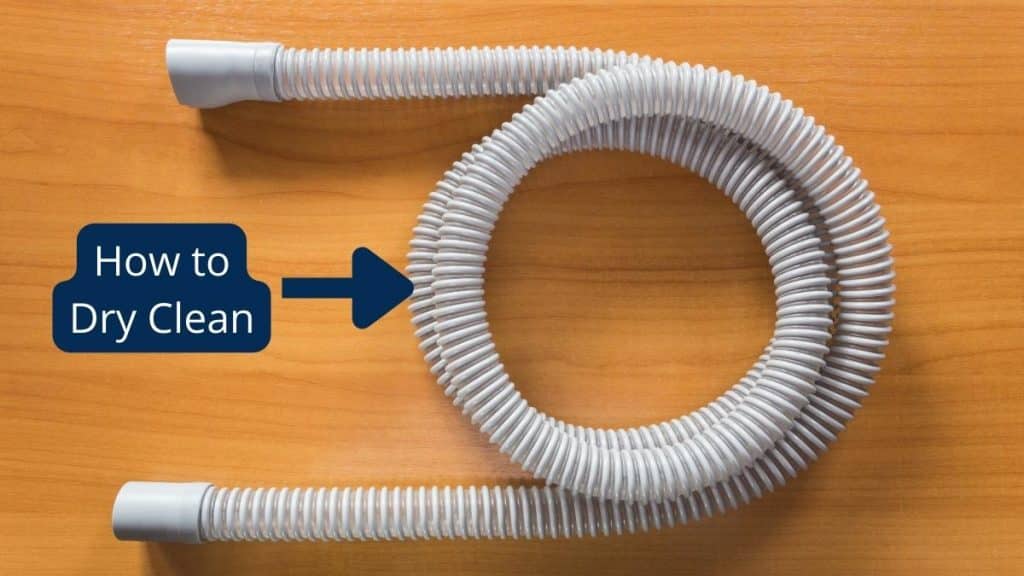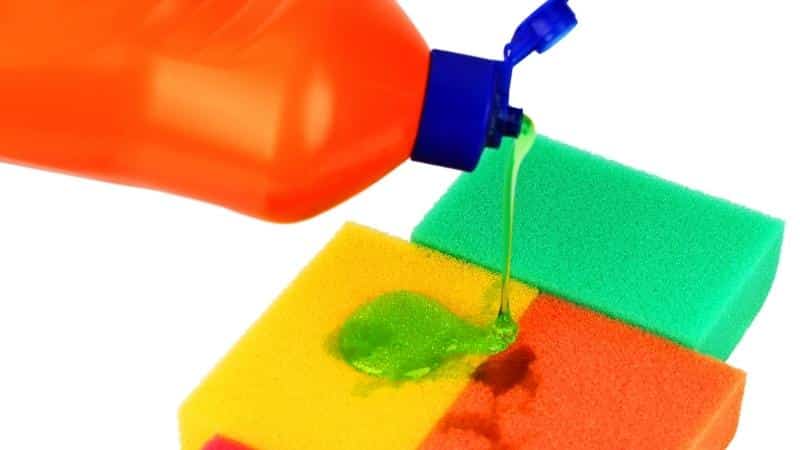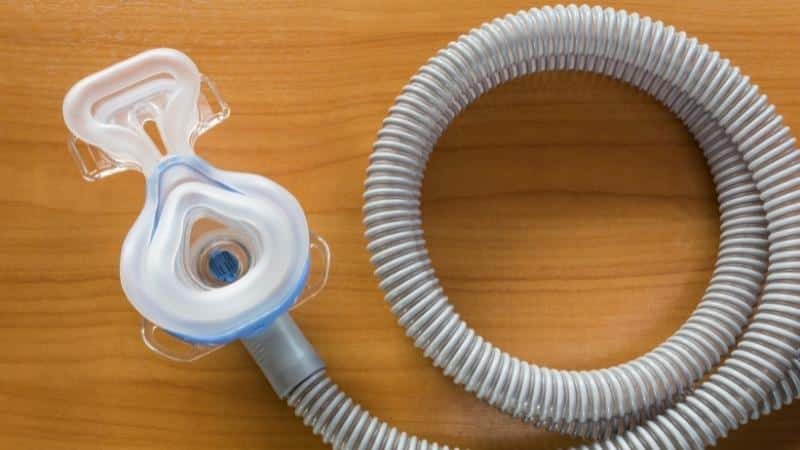Have you ever realized that after some time, items such as coffee, your retainer, or a dirty cup get some mold build up?
Even though you did not expect such, you should clean them regularly to avoid getting sick. Your CPAP hose needs the same done.
Cleaning your CPAP hose can be done using either white vinegar or dish soap.
Continue reading this article to learn how to use these cleaning products to freshen up your CPAP hose.
Why CPAP Cleaning is Important

A buildup of dust, oils, and dead skin cells inside your CPAP machine can serve as a breeding ground for bacteria, mold, and germs, making you sicker more frequently. The last thing you want to do if you have sleep apnea is to contaminate your airway or spread diseases like pneumonia or sinus infection.
Daily cleaning can help you benefit the most from your CPAP therapy in addition to being crucial for your health. The best thing is that keeping your equipment clean makes it last longer, so you won’t need to repair parts frequently, which can help you save money.
How to Dry Clean CPAP Hose: a Detailed Step by Step Guide
Method 1: Using white vinegar
What you will need;
- At least 1 cup of white vinegar
- At least 1½ cup of warm distilled water
- A bucket or a bigger container
- A drying area and a towel/cloth for wiping
- Tube cleaning brush ( not a must)
- Mild soap (not a must)
Step 1: Mix one cup of white vinegar (1 part) and three parts of warm, distilled water (3 parts) in a bucket or other container. Completely mix.
Step 2: Remove the hose from the machine and the mask, and then immerse it in the vinegar-water mixture.
Step 3: Give the hose around 30 minutes to soak in the solution. Unless the hose hasn’t been cleaned in a while, there is no need to leave it in longer. Some individuals like to use a hose cleaning brush initially to make sure the solution reaches all of the difficult-to-reach areas of the hose.
Step 4: Take out the hose from the mixture.
Step 5: The tube can now either be completely rinsed or submerged in warm, distilled water and mild soap. If you don’t like the vinegar scent, you can get rid of it this way. In either case, the hose needs to be properly cleaned with clean water at this stage.
Step 6: Set up the drying space. The hose can be laid out on a fresh towel or dried with a cotton rag. Before re-connecting the hose to the mask and CPAP machine, let it dry completely.
That’s all; your hose will now appear to be brand-new. The vinegar smell may be unpleasant at first, but it normally dissipates entirely quickly.
Method 2: Using dish soap

Step 1: Remove the CPAP machine’s plug from the power supply.
Step 2: Disconnect your mask and CPAP machine’s hose.
Step 3: Rinse the air tubing inside and out in a basin or tub filled with warm, drinkable water and mild soap. Dish detergents and other more potent cleaners should be avoided since they may damage the air tubing or leave a dangerous residue.
Step 4: Rinse once more completely in warm water fit for drinking.
Step 5: To dry, lay the air tubing on a flat surface over a towel. Keep out of direct sunlight.
How Can I Dry my CPAP Hose Quickly?
To quickly dry the hose, lay the air tubing flat on a towel-covered surface. Place out in direct sunlight if possible for quickest results.
Why is my CPAP Hose Getting Water in it?
Excessive condensation is the cause of the water in your CPAP tube. For comfort, the heated humidifier adds more moisture to the air you are inhaling. When enough water is in the air, it eventually reaches a point where it physically starts to rain into your tubing.
The atmosphere is most likely cooling as it passes through the tubing, which is why this is happening. This frequently occurs when it is colder outside, or someone lowers their home’s air conditioning.
Can I Use a Wet CPAP Hose?

Moisture in your CPAP hose can be a very annoying and uncomfortable issue. You won’t likely get hurt if you use the machine while there, but it might make your therapy less successful.
Due to the heated humidifier and the interior temperature of your home, many hoses produce an effect known as rainout, in which water enters the hose and accumulates on the outside of the tube.
A heated hose is one of the greatest options on the market right now if this is your situation and you are experiencing dampness in your hose while wearing it.
Having said all of that, if, like so many other CPAP users, you experience problems with your hose continuing to retain moisture after washing it, there is a great fix for this:
If feasible, connect the hose to your CPAP machine without the humidifier running. Reattaching your headgear is not recommended while you wait for the air from the device to pass through the tube. You’ll soon notice that all water droplets have been removed from your CPAP hose.
How Often Should You Clean Your CPAP Hose and Mask?
Here are our recommendations for equipment upkeep. However, for information about your unique product, always consult your user manual:
Every morning
Clean the cushion on your CPAP mask. You might not be aware of it, but as time passes, oils from your skin might be released, which can affect the effectiveness and quality of your seal and mask. So, after using your mask, properly wipe it to get rid of any oils. You can use a clean, dry mask for the following night by washing it in the morning.
Your CPAP mask can be cleaned by hand washing it in warm water with a little soap and gently rubbing it. Avoid using aggressive cleaning agents because they could ruin the mask or leave a dangerous residue. On a flat surface, let it dry away from direct sunshine.
Wash the water tank in your humidifier. We advise cleaning the water tub in your sleep apnea equipment with warm water and a mild detergent after each usage. After that, rinse it off and let it dry from the sun.
Every month
Check your mask cushion or pillows because they could wear out over time from normal use.
Examine the water tub of your humidifier for signs of wear and damage. The tub should be replaced if any part is damaged, hazy, or pitted.
Every three months
Check your air tubing for tiny cracks or tears, especially around the cuff, as these could result in air leaks and jeopardize your therapy. The tubing needs to be replaced if there are any tears.
Every six months
Check the filter in your sleep apnea machine’s back. Dust accumulation can reduce the efficacy of your treatment. You will need to replace the filter more frequently if you live in a dusty environment or close to the ocean.
Verify the chin and head straps on your CPAP mask. You might have a tendency to overtighten the mask if they’ve lost part of its elasticity, which can be uncomfortable. Any component that has gotten stretched out and is no longer fitting well should be replaced.
Examine the humidifier’s water tub for signs of wear and damage. Use a mix of 1 part household vinegar to 10 parts water to remove any white powder stains. Any component that has started to leak or become broken, hazy, or pitted should be replaced.
How Often Should You Replace The CPAP Hose?
CPAP tubing should be replaced every three months, whether it is heated or not. Over time, tubing becomes dirty, and moisture increases the possibility of toxins entering your lungs. The effectiveness of the treatment is diminished by tiny holes that appear when the plastic of the tubing degrades.
